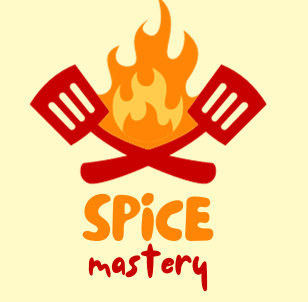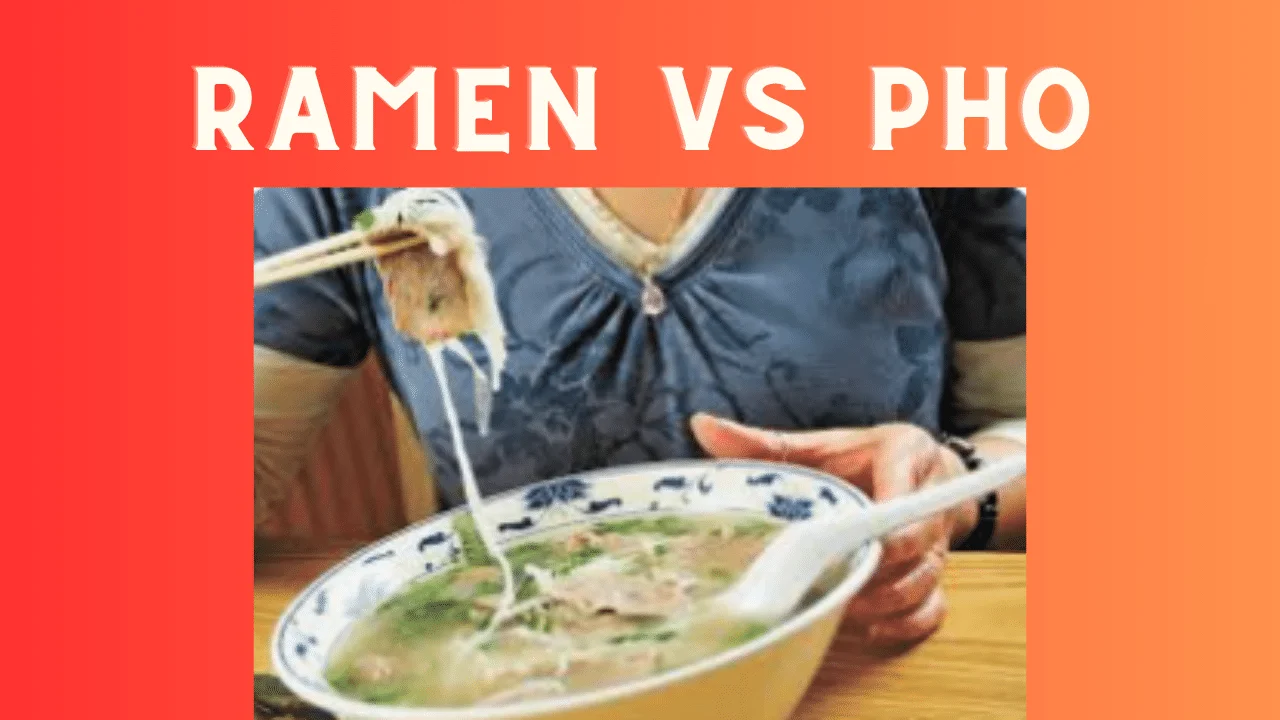Noodle soups are a signature dish in Asian cooking and a global favorite for their hearty comforting flavor. Ramen from Japan and pho from Vietnam are two of the most popular noodles in the world, and for good reason: they both have their own special combination of ingredients, flavors, and traditions. Not only are these foods delicious, but they also shed light on the cultures that made them. Our “Ramen vs. Pho” comparison delves into the history, nutrition, cultural relevance, and culinary brilliance of these two legendary soups, in addition to their respective flavors.
What are Ramen vs Pho?
The wheat noodles in a broth made with meat or fish, typically seasoned with miso or soy sauce, are the hallmark of the Japanese dish ramen. Thick and flavorful, this broth is usually served with toppings like scallions, nori (seaweed), menma (bamboo shoots), and pork slices. As time has passed, ramen has taken on many forms, each reflecting the unique culinary traditions of a different region in Japan.
Contrarily, the Vietnamese soup pho is characterized by its delicate aroma and delicate flavors. Typically accompanied by either beef or chicken, it showcases delicate rice noodles. Simmered spices such as star anise, ginger, and cloves impart a fragrant and flavorful aroma to the clear broth. At the table, diners can personalize their bowls by adding fresh herbs, lime wedges, bean sprouts, and cilantro.
Exploring the Depth of Flavors
Ramen Umami Flavor vs Pho Aromatic Flavor
Each dish has its own unique flavor profile, and some people prefer ramen while others prefer pho. Soups made with ramen tend to be heartier and savory, with flavors characterized as “umami,” because the ingredients, such as pork bones, chicken, or seafood, are simmered for hours to achieve this effect. On the other hand, pho broth is not heavy but still has a pleasant aroma thanks to the combination of spices and herbs. The combination creates a complex flavor that is both aromatic and refreshing without being heavy.
Wheat vs Rice Noodles
Ramen and pho noodles have a major impact on the texture and flavor absorption of the soup. Wheat noodles, the traditional ingredient in ramen, are ideal for clinging to the flavorful broth because they are both elastic and absorbent. The delicate texture of the rice noodles used in pho pairs well with the robust flavors of the broth.
Broth
The rich, opaque broth of ramen is the result of simmering the ingredients for many hours to bring out a depth of flavor that varies from mildly fishy to very meaty, depending on the style and region. In contrast, pho broth is transparent and airy because its purity is the main attraction; it is skimmed to remove any fats or impurities, allowing the spices and meats’ delicate flavors to shine through.
Toppings and Garnishes
The toppings add another dimension of taste and texture to both dishes. A soft-boiled egg, bamboo shoots, green onions, and other toppings are common on ramen dishes. The fresh herbs, lime wedges, and sliced peppers that accompany pho are usually served on the side so that customers can customize the seasoning to their taste.
Regional Variations
Local ingredients and preferences inform the many regional variations of ramen and pho. As an illustration, ramen from Kyushu is known for its rich pork bone broth, whereas ramen from Tokyo is characterized by a soy-flavored chicken broth. Similarly, southern Vietnamese pho is sweeter and has more ornate garnishes, while northern Vietnamese pho is characterized by a heavier use of aromatics and green onions.
Cultural Significance and Dining Experience
Cultural similarities and differences are further demonstrated by the manner in which these soups are eaten and the places in which they are enjoyed. In either a busy Japanese ramen shop or a quaint Vietnamese pho bistro, these dishes provide more than just food; they entice diners to become part of a ritual that honors history and rejoices in community. The aesthetic, textural, and flavor balance that characterizes Japanese and Vietnamese cuisine is on full display in these soups.
Nutritional Comparison of Ramen vs Pho
The nutritional content of these two dishes differs significantly due to the ingredients and preparation methods used, as can be seen when looking at their health aspects. Calories, macronutrients, and micronutrients are all broken down here to help those who are watching their food intake make better decisions.
Caloric Content
The dense wheat-based noodles and rich broth give ramen its typically higher calorie count. The calorie count can be raised even higher with the addition of eggs, meat, and extra toppings. People watching their calorie intake often choose pho because of its lower calorie bowls, which are made with light broth and lean toppings.
Macronutrient Balance
Despite their differences, both soups are a good source of macronutrients. Ramen is high in carbohydrates and protein from the noodles and meaty toppings, and it often has a lot of fat in it from the rich broth. Although it does contain carbs and protein, unless you add extra fatty meats, pho typically has less fat.
Vitamins and Minerals
Star anise, cinnamon, and fresh herbs are just a few of the spices and herbs that give pho its flavor—and a few vitamins and minerals, too. Traditional ramen isn’t very nutritious unless you top it with a variety of vegetables, which isn’t very often.
Dietary Fiber and Other Nutrients
If you add a lot of fresh herbs and vegetables to pho, it might have more dietary fiber. On the other hand, unless you top it with vegetables, traditional ramen won’t have much fiber.
Cooking Techniques of Ramen vs Pho
There are a variety of techniques used in the art of making noodle soups, and each one contributes to the dish’s unique flavor and texture. Grasping these techniques can help one better appreciate the intricacy and artistry of pho and ramen preparation.
Broth Preparation
Both dishes rely heavily on the broth. Particularly for Tonkotsu-style ramen, the rich flavor and velvety texture of the broth are achieved after hours of boiling. Similar to how pho broth is simmered for hours, it calls for a careful balance of spices and careful skimming to keep it clear and light.
Noodle Cooking
In traditional ramen, the noodles are cooked separately before being added to the broth. This method ensures that the noodles remain firm and chewy. To make sure the noodles are soft without being overcooked, pho is typically cooked with pre-soaked noodles in the broth or boiling water for a short while before serving.
Assembling the Dish
To make ramen, place the noodles in the bowl first, then pour in the hot broth and garnish with the desired ingredients. Guests can personalize their pho at the table by choosing their preferred noodles, broth, herbs, sauces, and lime from a variety of options.
Modern Innovations and Global Popularity
Inspiring a plethora of creative dishes and fusion styles, ramen and pho have gone global, transcending their traditional origins. In this article, we will look at some of the ways these noodle soups have changed and evolved over the years.
Fusion Dishes and New Trends
Ramen and pho are just two examples of the many fusion cuisines that chefs around the world are developing. Take “Pho-ramen” as an example; it’s a fusion of pho spices and herbs with the hearty wheat noodles and ramen broth.
Vegetarian and Vegan Versions
Ramen and pho with vegetarian or vegan options have been rising in popularity as health consciousness among diners around the world has grown. Making the dishes more accessible, these versions use vegetable broths and swap out the traditional meat toppings for tofu or tempeh.
Popularity and Cultural Impact
The number of restaurants serving ramen and pho has skyrocketed, with each location bringing its own special twist to the classic dishes. Thanks to their international popularity, more people are familiar with and appreciative of Japanese and Vietnamese cuisines and culture.
FAQs
1. Which is healthier, ramen or pho?
Pho is generally considered healthier due to its lighter broth and lean meat options.
2. Can vegans eat ramen or pho?
Yes, both dishes can be adapted with vegetable broth and toppings like tofu to cater to vegan diets.
3. What makes ramen broth different from pho broth?
Ramen broth is typically richer and cloudier, often made from pork or chicken bones, whereas pho broth is clear and spiced with ingredients like star anise and cinnamon.
4. Are ramen noodles the same as pho noodles?
No, ramen uses wheat noodles, which are thicker and chewier, while pho uses thinner, smoother rice noodles.
5. How long does it take to prepare authentic ramen and pho?
Both dishes can take several hours to prepare, mainly due to the time needed to simmer the broths to develop deep flavors.
Conclusion
This comparison sheds light on the varied world of noodle soups by comparing and contrasting the distinctive flavors of ramen vs pho, but it also encourages us to value the diverse culinary traditions of Vietnam and Japan. Every bowl of noodle soup is unique and delicious, whether you’re in the mood for the strong, umami-packed flavors of ramen or the delicate, fragrant broth of pho.

Melody Roth, a seasoned blog writer with a passion for the delectable world of food, specializes in crafting mouth-watering articles on favorites like pizza and burgers. With years of experience under her belt, Melody serves up stories as tantalizing as the dishes she describes, making her an invaluable voice in the culinary blogging realm.

